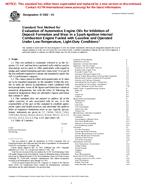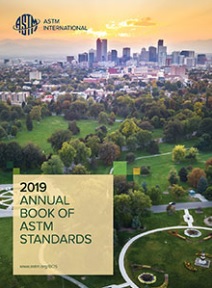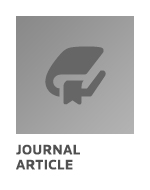
ASTM D5302-01
1.1 This test method is commonly referred to as the Sequence VE test² and has been correlated with vehicles used in stop-and-go service prior to 1988, particularly with regard to sludge and varnish formation and valve train wear. It is one of the test methods required to evaluate oils intended to satisfy the API SJ performance category.
1.2 The values stated in either inch-pound units or SI units are to be regarded separately as the standard. Within the text, the SI units are shown in parentheses when combined with inch-pound units. Some of the figures and forms have identical numerical designations, but with the letter M following the numerical designation: these are alternative figures and forms that contain SI units.
1.3 This standard does not purport to address all of the safety concerns, if any, associated with its use. It is the responsibility of the user of this standard to establish appropriate safety and health practices and determine the applicability of regulatory limitations prior to use. Specific precautionary statements are given in 7.7, 7.8.9.6, 7.8.13, 7.10.2, 7.10.3.2(c), 8.3.4.2, 8.4.4.3, 8.4.5.2, 9.3.4.4, 9.6.1.2, 12.1.1.5, 12.1.4.5, 12.2.1, 12.2.1.5, Fig. A3.6, and Annex A8.
1.4 Table of Contents:
| Section | |
| Scope | 1 |
| Referenced Documents | 2 |
| Terminology | 3 |
| Summary of Test Method | 4 |
| Significance and Use | 5 |
| Apparatus-General Description | 6 |
| Apparatus-The Test Engine | 7 |
| Sequence VE Test Engine Parts Kit | 7.1 |
| Required New Engine Parts | 7.2 |
| Reusable Engine Parts | 7.3 |
| Specially Fabricated Engine Parts | 7.4 |
| Special Engine Measurement and Assembly Equipment | 7.5 |
| Miscellaneous Engine Components-Preparation | 7.6 |
| Solvents and Cleansers Required | 7.7 |
| Assembling the Test Engine-Preparations | 7.8 |
| Assembling the Test Engine-Installations | 7.9 |
| Engine Installation on the Test Stand | 7.10 |
| Engine Fluids-Supply/Discharge Systems | 8 |
| Intake Air | 8.1 |
| Fuel | 8.2 |
| Engine Oil | 8.3 |
| Coolants | 8.4 |
| Measurement Instrumentation | 9 |
| Temperatures | 9.1 |
| Pressures | 9.2 |
| Flow Rates | 9.3 |
| Fuel Consumption | 9.4 |
| Speed and Load | 9.5 |
| Exhaust Gas | 9.6 |
| Miscellaneous Laboratory Equipment | 10 |
| Test Stand Calibration | 11 |
| Verification | 11.1 |
| Unacceptable Calibration Tests | 11.2 |
| Test Stand Modifications | 11.3 |
| Reference Oil Accountability | 11.4 |
| Test Numbering System | 11.5 |
| Procedure | 12 |
| Pre-Test Procedure | 12.1 |
| Engine Operating Procedure | 12.2 |
| Periodic Measurements and Functions | 12.3 |
| Special Maintenance Procedures | 12.4 |
| Diagnostic Data Review | 12.5 |
| End of Test Procedure | 12.6 |
| Interpretation of Results | 13 |
| Parts Rating Area-Environment | 13.1 |
| Sludge Ratings | 13.2 |
| Varnish Ratings | 13.3 |
| Clogging | 13.4 |
| Sticking | 13.5 |
| Wear Measurements | 13.6 |
| Assessment of Test Validity | 14 |
| Average Exhaust Gas NO | 14.2 |
| Used Oil Analyses | 14.3 |
| Blowby Flow Rate | 14.4 |
| Intake Manifold Vacuum | 14.5 |
| Fuel Consumption Rate | 14.6 |
| Oil Consumption | 14.7 |
| Report | 15 |
| Report Format | 15.1 |
| Special Forms for Automated Data Acquisition | 15.2 |
| Standard Report | 15.3 |
| Calibration Test Report | 15.4 |
| Precision and Bias | 16 |
| Precision | 16.1 |
| Bias | 16.2 |
| ANNEXES | |
| Special Service Tools for the Test Engine | A1 |
| External Oil Heat Exchanger Cleaning Technique | A2 |
| Detailed Specifications and Photographs of Apparatus | A3 |
| Engine Part Number Listing | A4 |
| Operational Data Log Sheets | A5 |
| Rating Worksheets | A6 |
| Final Report Forms and Photographs | A7 |
| Safety Precautions | A8 |
| Automatic Data Acquisition | A9 |
| Oakite 811 Monitoring Program | A10 |
| Test Precision-Reference Oils | A11 |
| Control Chart Technique for Severity Adjustment | A12 |
| Statistical Equations for Mean and Standard Deviation | A13 |
| Data Dictionary | A14 |
| One-half Millimetre Oversize Piston Modifications | A15 |
| Required Inspections and Operations for Reuse of Cylinder Heads | A16 |
| APPENDIXES | |
| Engine Measurement Sheets | X1 |
| Sources of Materials and Information | X2 |
| Analysis of Phillips “J” Fuel (Batch 26) | X3 |
| Theoretical Exhaust Gas Relationships-Phillips “J” Fuel | X4 |
| Description of Scott Quarterly Gas Audit Service | X5 |
Product Details
- Published:
- 11/10/2001
- Number of Pages:
- 121
- File Size:
- 1 file , 2.7 MB

